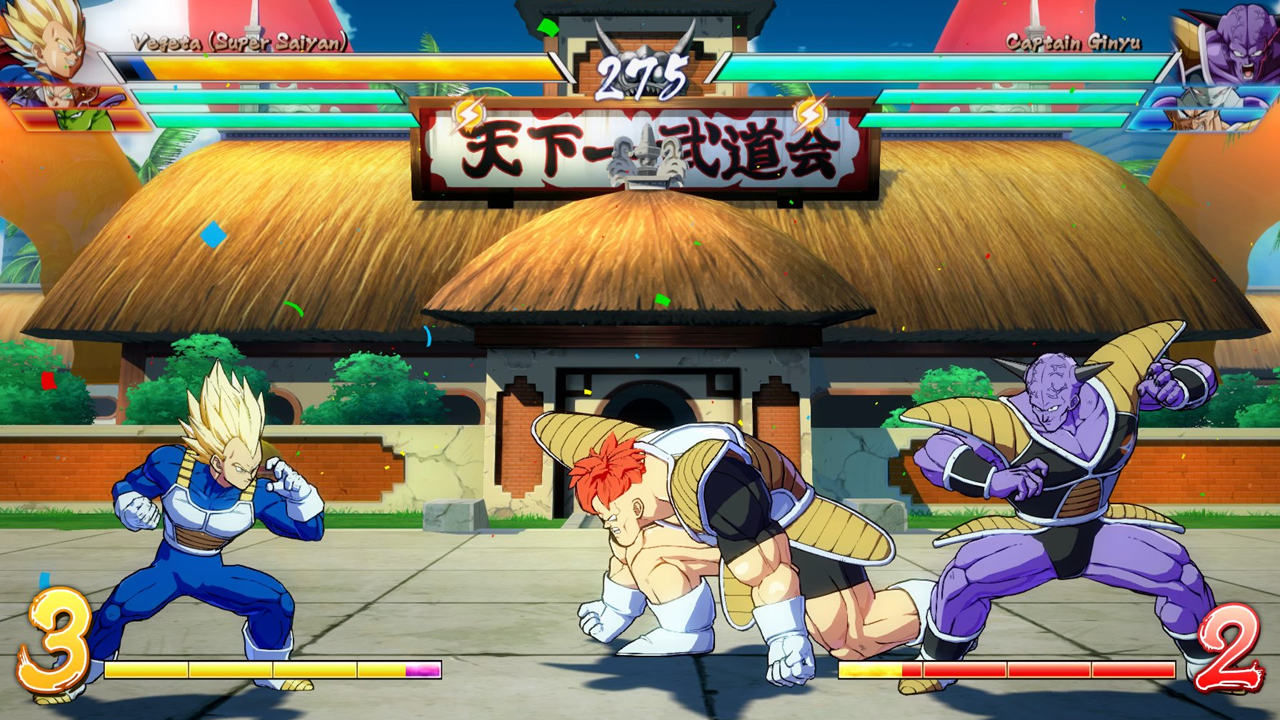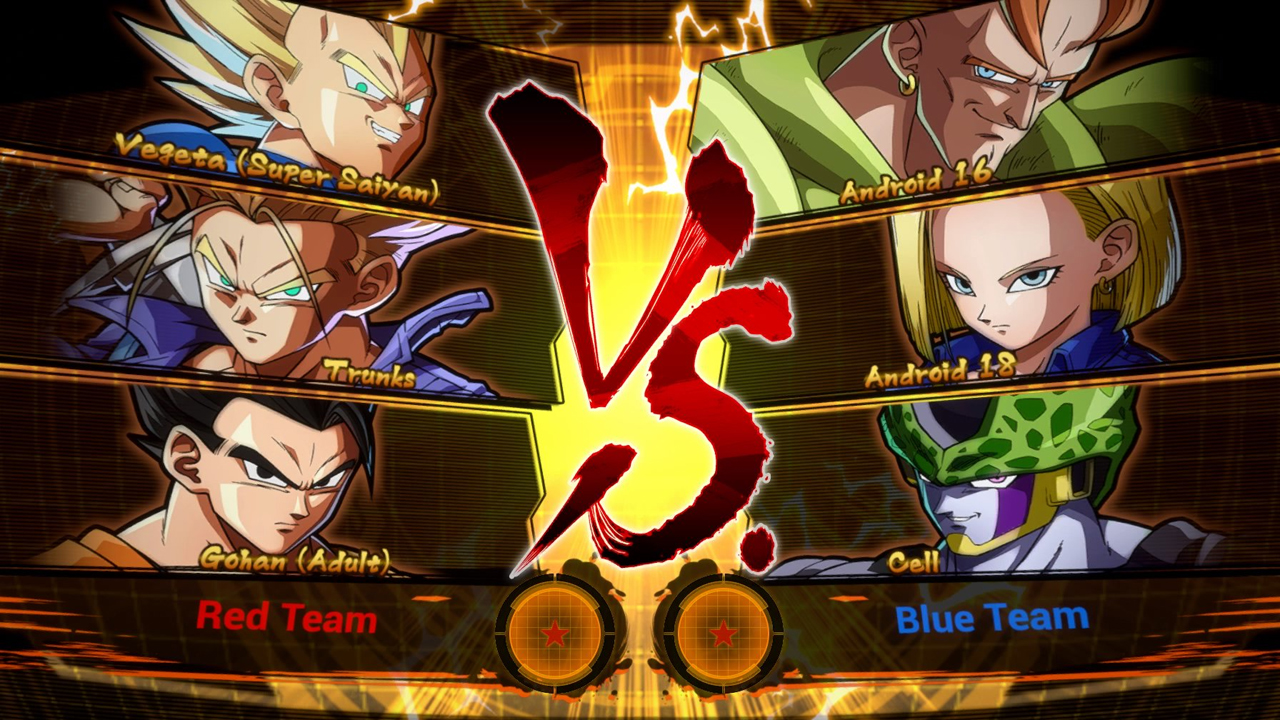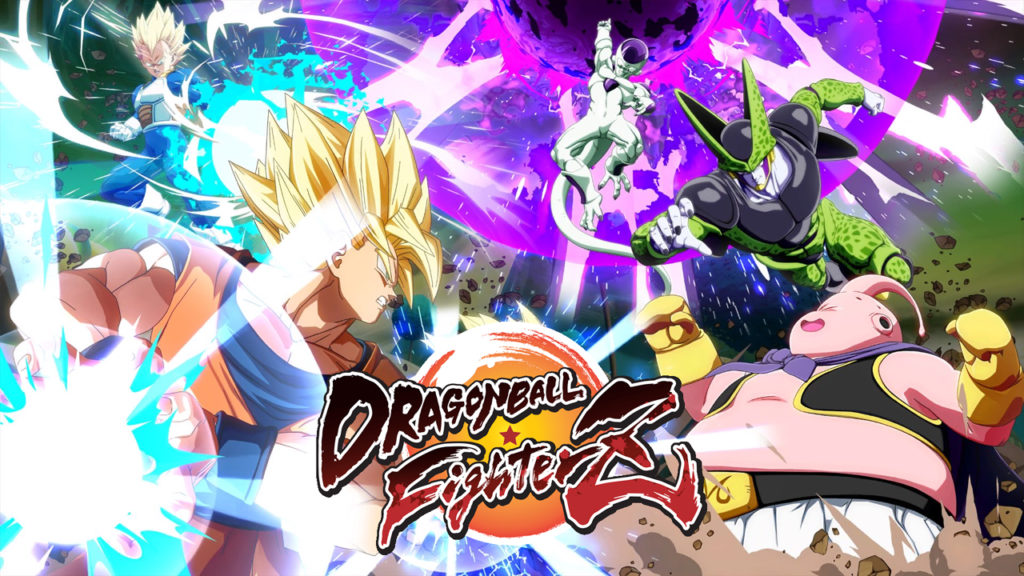In the late summer of 1998, Cartoon Network began airing episodes of an obscure (in the US at the time) nine-year-old anime series called Dragon Ball Z. The show was an immediate hit. In fact, so immense was its popularity, that it nearly single-handedly brought anime (and manga) into the mainstream in America. When I was introduced to the series in the early autumn of '99, I was instantly hooked. Watching DBZ became a daily afternoon ritual with my buddy at the time. And I didn't stop there. Over the next few years I amassed a small collection of Dragon Ball Z paraphernalia including t-shirts, posters, action figures, and even VHS tapes and DVDs.
The first licensed video game to come out following the show's US debut was the Dimps-developed fighting game, Dragon Ball Z: Budokai. After it came to the GameCube in 2003, I pretty much jumped at the chance to try it out. After all, if there ever existed a property just screaming for a truly awesome fighting game adaptation, it was Dragon Ball Z. Sadly, however, Dimps wasn't quite up to the task.
Budokai was a bit of a let down. It didn't really do proper justice to the series. Despite this fact (and the tepid reviews), Dimps was allowed to go right on churning out a slew of lackluster, half-hearted sequels, year after year, for well over a decade. With so many titles that lacked even so much as a hint of additional effort or enthusiasm from Dimps, and no sign of a developer change on the horizon, it seemed like Dragon Ball Z was doomed to an eternity of uninspired shovelware video games.

Earth's Last Hope
Around the same time that the fans were lamenting not having any decent DBZ games to play, another Japanese developer, by the name of Arc System Works, was beginning to make a name for themselves with their top-notch arcade fighter series, Guilty Gear and BlazBlue. The reasons for their success were easy to understand. The games had depth and variety, they used beautiful hand-drawn character sprites, and they were fun to play. And because ASW took the time and effort to carefully balance the gameplay, the games were continually being featured at officially sanctioned fighting game tournaments.
Dimps DBZ games could not hope to achieve the kind of acclaim that Arc System's games were receiving because Dimps games weren't offering any of those things. For 15 years it seemed like a pipe dream that Dragon Ball Z fans would ever get a game of a caliber even approaching a series like Guilty Gear or BlazBlue. But with Dragon Ball FighterZ, Arc System Works themselves, have finally given us exactly that. (And I couldn't be happier about it!)
Okay, while the title may leave something to be desired, the game more than makes up for it in nearly every other way possible. True to Arc's pedigree, the visuals are a Super Saiyan sized step up from the somewhat unattractive 3D renderings of previous DBZ games. Instead of going that route, Arc decided to try and achieve a look that appears remarkably similar to what you see when you watch the actual anime. To accomplish this feat, Arc's extremely talented art team utilized a very similar method to the one they had already come up with for their most recent Guilty Gear games. This method involves making special stylized 3D renderings, enhancing them with overlays and various precision adjustments, and then displaying it all in 2D. The results are astoundingly convincing and go a very long way towards giving Akira Toriyama's beautiful artwork the respect it truly deserves.
As far as the gameplay is concerned, Dragon Ball FighterZ totally blows the Dimps games away. Instead of the extremely basic ground mode/hover mode option, and fighting moves that basically consisted of either staying back and spamming the blast button or getting up close and spamming the attack button(s), Arc System Works took the time and effort to build their Dragon Ball Z game into a tournament-ready, arcade-quality 2D fighter with deep tactical combat options that you can actually take time to learn (if you so choose). Furthermore, the developer could have merely limited the game to a simple one-on-one fighter and they still would have had a winner on their hands. But being Arc System Works, they decided to kick things up to (over) 9,000 by making it into an entertainingly sophisticated, fully-character-swappable, three-on-three arcade-style fighter (and they even threw in a somewhat decent story mode as well)!

The World's Strongest
That isn't to say that Dragon Ball FighterZ is without any flaws. It's not. For starters, the avatar-focused, social menu system is a bit ridiculous. Luckily, it can be (mostly) bypassed in favor of a much more sensible, traditional-style menu at any time by simply pulling L2 (or Left Trigger). Also, having to go through the occasionally ridiculous process of finding an available lobby before even getting access to the menu screen is just utter nonsense.
The roster options, while plentiful for a one-on-one fighting game, can't help but seem a touch sparse for three-on-three fighting. Additionally, while Super Saiyan Goku and Vegeta are definitely appreciated, it would've been nice to have the option to play in their non-Super Saiyan forms as well. It would have also been pretty cool to be able to fight as The Great Saiyaman, or even the one-armed, alternate-future versions of Gohan, in addition to just plain old no-frills adult Gohan.
Perhaps some of these issues will be addressed through future DLC and/or updates. Even if they aren't, they're pretty minor issues anyhow. When you consider everything that Dragon Ball FighterZ gets right and, especially, the absurd number of years it took to finally get such a fantastic Dragon Ball Z game, it's hard not to feel pretty excited about it. (I know I sure do!)
(This is a repost of a review that originally appeared on 12/12 Games.)
-Developer: Arc System Works
-Platforms: Steam, PlayStation 4 (reviewed), Xbox One
-Price: $59.99
[Images: Arc System Works]

